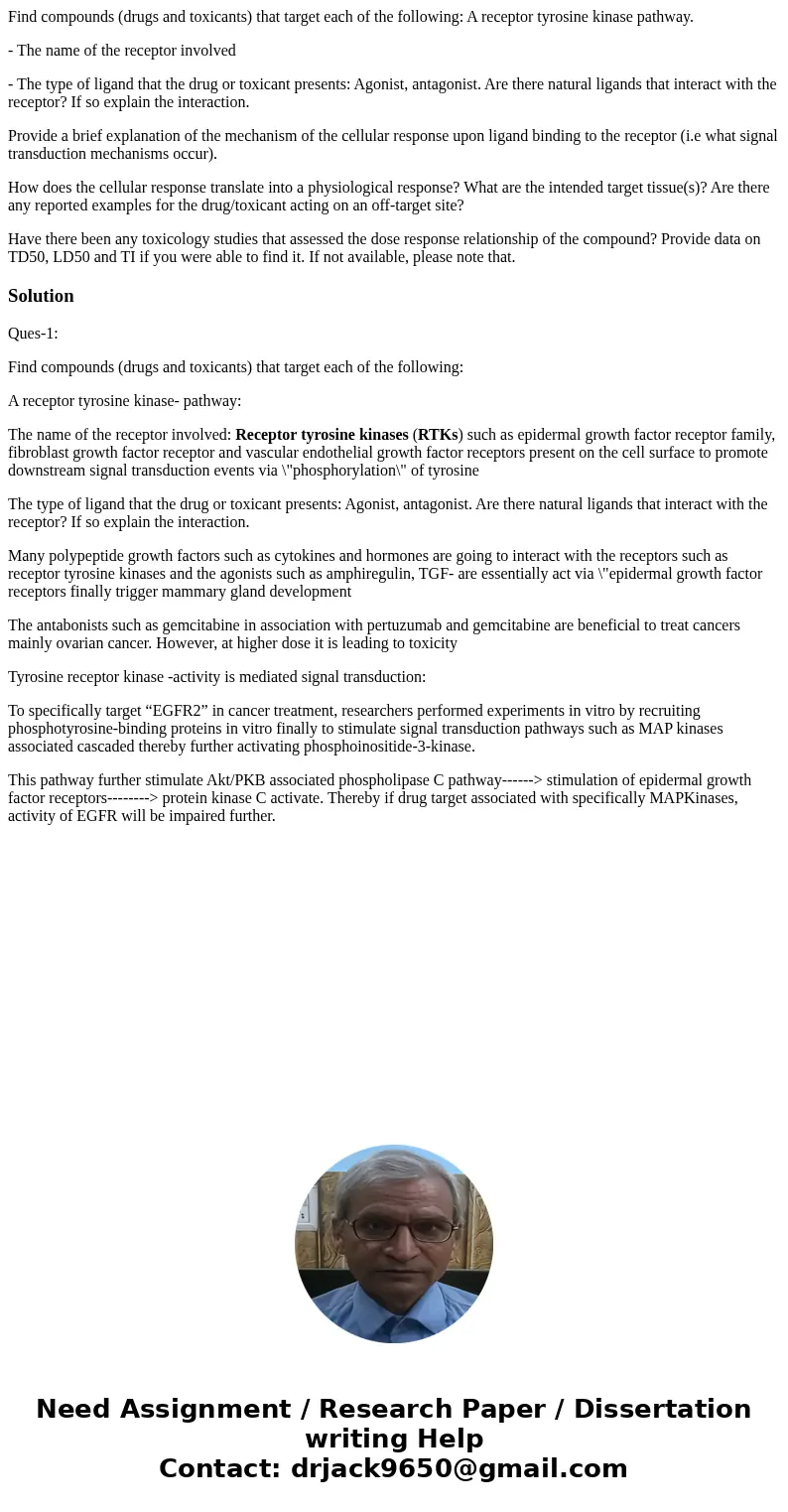Find compounds drugs and toxicants that target each of the f
Find compounds (drugs and toxicants) that target each of the following: A receptor tyrosine kinase pathway.
- The name of the receptor involved
- The type of ligand that the drug or toxicant presents: Agonist, antagonist. Are there natural ligands that interact with the receptor? If so explain the interaction.
Provide a brief explanation of the mechanism of the cellular response upon ligand binding to the receptor (i.e what signal transduction mechanisms occur).
How does the cellular response translate into a physiological response? What are the intended target tissue(s)? Are there any reported examples for the drug/toxicant acting on an off-target site?
Have there been any toxicology studies that assessed the dose response relationship of the compound? Provide data on TD50, LD50 and TI if you were able to find it. If not available, please note that.
Solution
Ques-1:
Find compounds (drugs and toxicants) that target each of the following:
A receptor tyrosine kinase- pathway:
The name of the receptor involved: Receptor tyrosine kinases (RTKs) such as epidermal growth factor receptor family, fibroblast growth factor receptor and vascular endothelial growth factor receptors present on the cell surface to promote downstream signal transduction events via \"phosphorylation\" of tyrosine
The type of ligand that the drug or toxicant presents: Agonist, antagonist. Are there natural ligands that interact with the receptor? If so explain the interaction.
Many polypeptide growth factors such as cytokines and hormones are going to interact with the receptors such as receptor tyrosine kinases and the agonists such as amphiregulin, TGF- are essentially act via \"epidermal growth factor receptors finally trigger mammary gland development
The antabonists such as gemcitabine in association with pertuzumab and gemcitabine are beneficial to treat cancers mainly ovarian cancer. However, at higher dose it is leading to toxicity
Tyrosine receptor kinase -activity is mediated signal transduction:
To specifically target “EGFR2” in cancer treatment, researchers performed experiments in vitro by recruiting phosphotyrosine-binding proteins in vitro finally to stimulate signal transduction pathways such as MAP kinases associated cascaded thereby further activating phosphoinositide-3-kinase.
This pathway further stimulate Akt/PKB associated phospholipase C pathway------> stimulation of epidermal growth factor receptors--------> protein kinase C activate. Thereby if drug target associated with specifically MAPKinases, activity of EGFR will be impaired further.

 Homework Sourse
Homework Sourse